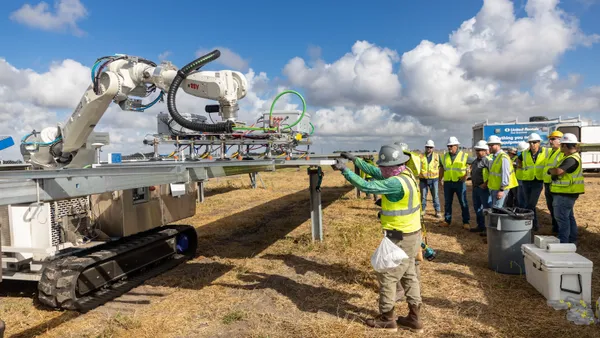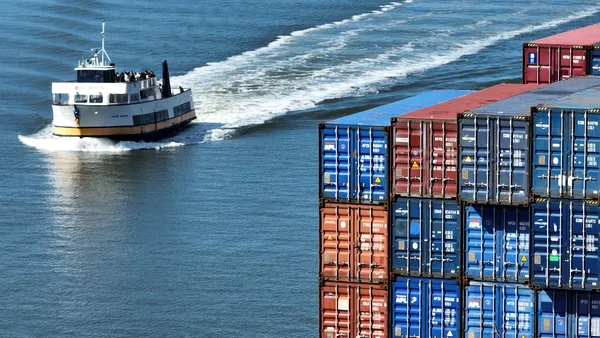It’s no secret that consumers are more environmentally conscious than ever, increasingly seeking out brands that better align with their values. A recent study by Simon-Kucher & Partners found that nearly 90% of consumers have shifted their purchasing behavior towards being more sustainable in recent years — with over a third of them willing to spend more for more “sustainable” products and services.
With sustainability becoming such a hot button issue, especially during Earth Month, businesses are under more pressure than ever to demonstrate their commitment to reducing their environmental impact — but that pressure often results in those same businesses taking shortcuts or relying on ineffective solutions to meet some of the ambitious net-zero goals and timelines they’ve set.
But simply claiming to be 'green' isn't enough. Vague messaging, reliance on low-quality, unverified solutions and sustainability claims that cannot be substantiated can backfire, leading to accusations of greenwashing from advocacy groups and the general public itself. This creates a difficult situation where those who step up and attempt to take climate action are often the ones who face the most criticism — while companies doing less simply fly under the radar. Recent studies show that 8 out of 10 CEOs say they feel pressured to make public commitments to improve sustainability efforts, which helps to showcase the tension between genuine action and perceived public perception.
Unfortunately, this perception has been negatively shaped by numerous examples of greenwashing, intentional or not, that often overshadow any actual, real progress made by businesses on reducing their overall environmental impacts. A 2023 report revealed that one in four climate-related ESG risk incidents globally was linked to greenwashing, contributing misleading information that makes it challenging for consumers and investors to differentiate between real environmental impact and mere public relations or marketing spin. Often though, the best way to cut through cloudy and murky misinformation is to shine the light of transparency on it all.
Transparency should be the foundation of any credible sustainability strategy. It means being open and honest about your environmental impact, both positive and negative. The notion of transparency as a way to build integrity and trust is gaining steam with the general public as well — studies show that 73% of Gen Z consumers say they are willing to pay more for a product or service if the brand is completely transparent.
Achieving this type of transparency means pulling back the curtain and sharing data on your carbon footprint, outlining your realistic emissions reduction goals and honestly detailing the initiatives you're undertaking to achieve them. By being transparent, you empower your customers to hold you accountable and make their informed decisions about supporting your brand.
Unfortunately, many greenwashing claims originate thanks to brands relying on low-quality or unverified carbon credits. While carbon credits can be a valuable tool for businesses that are serious about offsetting their emissions, it's important to note that high-quality carbon credits are intended to supplement a comprehensive sustainability strategy, not replace it.
Carbon credits are not a shortcut to net-zero or an excuse to pollute. First, take steps to reduce your business's environmental footprint through operational changes, then use carbon credits to eliminate any residual emissions that cannot yet be eliminated. High-quality carbon credits can then help address those unavoidable emissions and demonstrate your company’s commitment to achieving net-zero in a transparent, verifiable way.
In just five short years, Cool Effect was able to use high quality carbon credits to send over $66 million to communities on the front lines of the fight against climate change, making a tremendous, demonstrable financial impact on the places that desperately need it. These crucial funds have supported everything from job training and improved local infrastructure, to upgraded sanitation and improved air quality for thousands of people.
This translated into over 7 million tonnes of harmful carbon emissions being reduced, which is a big number, but it doesn’t tell the whole story. To understand the real impact of this data, it’s important to go beyond the numbers. Behind every dollar, behind every tonne reduced, there’s a real human impact. Whether it’s the mom in India who, thanks to a solar panel project, can now turn the lights on for her kids to do homework at night or a local community in Mexico that was able to remodel their local clinic and bring fresh drinking water to town for the first time, there’s no shortage of stories when it comes to the impact high quality carbon credits can have.
Greenwashing is no match for real impact. The power of real impact is why Cool Effect released its first ever Impact Report, sharing the data and stories that paint a full picture of the transformative power of high quality carbon credits — fighting greenwashing with Carbon Done Correctly.
To see how your business can make a real impact while still meeting your organization’s sustainability goals, explore this report — dig into the data, understand the science and hear some real human stories about the real, tangible impact that high-quality carbon credits can have on the planet and its people.










